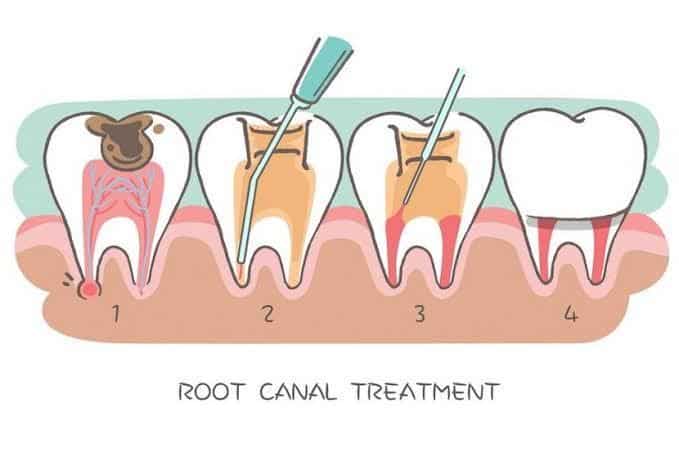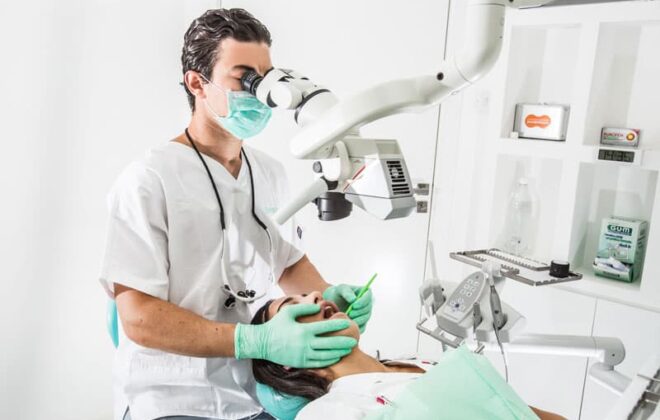Guidelines That You Need to Follow for Root Canal Treatment
Outer enamel layer in a tooth encloses a hard layer called dentin and the innermost soft tissue pulp. This pulp connective tissue contains blood vessels and nerves. The pulp chamber and root canals house the pulp tissue in a tooth. In root canal treatment, infected or inflamed pulp including its nerve supply is removed. However, a root canal treated tooth can survive without pulp. The presence or absence of a nerve won’t affect the functioning of the tooth as the only function of pulp is sensory i.e. to provide the hot or cold sensation. Although, a root canal treated tooth is less viable and more susceptible to fracture and thus needs to be restored with a crown prosthesis.
What is a Root Canal Treatment?
Root canal treatment is executed to treat a decayed or traumatized tooth where the infection or inflammation reaches or approaches pulp. It involves the procedure of removing the pulp to replace it with an artificial inert ‘filling’ material. This is followed by placement of artificial crown prosthesis. Root canal Treatment is also done to treat periapical abscess, resorption, pulp damage caused by repetitive dental procedures, etc.
What to expect during Root Canal Treatment?
- X-ray– In case of tooth decay or fracture, X-rays are taken to determine the extent of decay or trauma and to evaluate the need for root canal treatment.
- Anesthesia– Local anesthesia is administered to numb the affected tooth.
- Isolation – The affected tooth is isolated with a rubber dam or cotton rolls to keep it clean and dry during the entire procedure.
- Access Opening – Excavator and Dental handpiece is used to remove decay to gain access to the pulp chamber.
- Biomechanical Preparation – A series of files are used to clear away the pulp debris and to shape and prepare the canals. Along with it, irrigation is done to wash away the remaining pulp and to kill any remaining bacteria to reduce the risk for further infection.
- Obturation – In Obturation procedure that follows, Root canal sealant along with Gutta Percha material is used to establish an adequate seal of the root canal system.
- Filling– The opening made in the tooth is sealed with a filling, while you wait for a permanent crown.
How many visits are required for root canal treatment?
Most root canal treatments can be completed within 2 – 3 appointments itself. First appointment involves the removal of infected/inflamed pulp. The second (and maybe third) appointment is when the root canal is cleaned and filled with biocompatible gutta percha material. Each appointment lasts around 90 minutes. However, single visit root canal treatments can also be done.
Is capping necessary after Root Canal Treatment?
Root canal treated tooth can become weak and thus are more prone to fracture. In posterior back teeth where root canal treatment has been done, capping should be done.
What is Post & Core? When is there a need for Post & Core?
Prefabricated or customized Post is cemented into a prepared root canal to retain a core restoration, which in turn retains the final crown restoration.
There is need for post only when there is insufficient remaining tooth structure to support the core material or the final restoration. The height of the post should always be the same or greater than that of the crown, and its width should be determined by the width of the canal after root canal treatment.
How long will the treated tooth last?
Most teeth treated endodontically can last a lifetime! Since tooth decay can occur in treated teeth also, oral hygiene should be maintained to prevent any future dental problems.
Should you do root canal treatment or extraction?
Natural tooth should be preserved whenever possible and root canal treatment allows that. Extraction needs to be followed by prosthetic replacement, which could even impact neighboring teeth and supporting gums.
Care after root canal treatment:
- Practice good oral hygiene.
- The tooth can feel sensitive for the first few days after the treatment, especially if there was existing pain or infection before the procedure. There can be temporary discomfort, which can be relieved with over-the-counter prescription analgesics. However, if severe pain or pressure is experienced after the root canal treatment, then visit the dentist at the earliest.
- One should not eat for a few hours until the numbness in mouth wears off to avoid biting your own cheek or tongue.
- Consume soft diet after root canal treatment. Avoid any hard or hot food that can hurt your teeth.
Author Dr. Reena Waghela
Article orignally posted at: https://www.newsilike.in/



